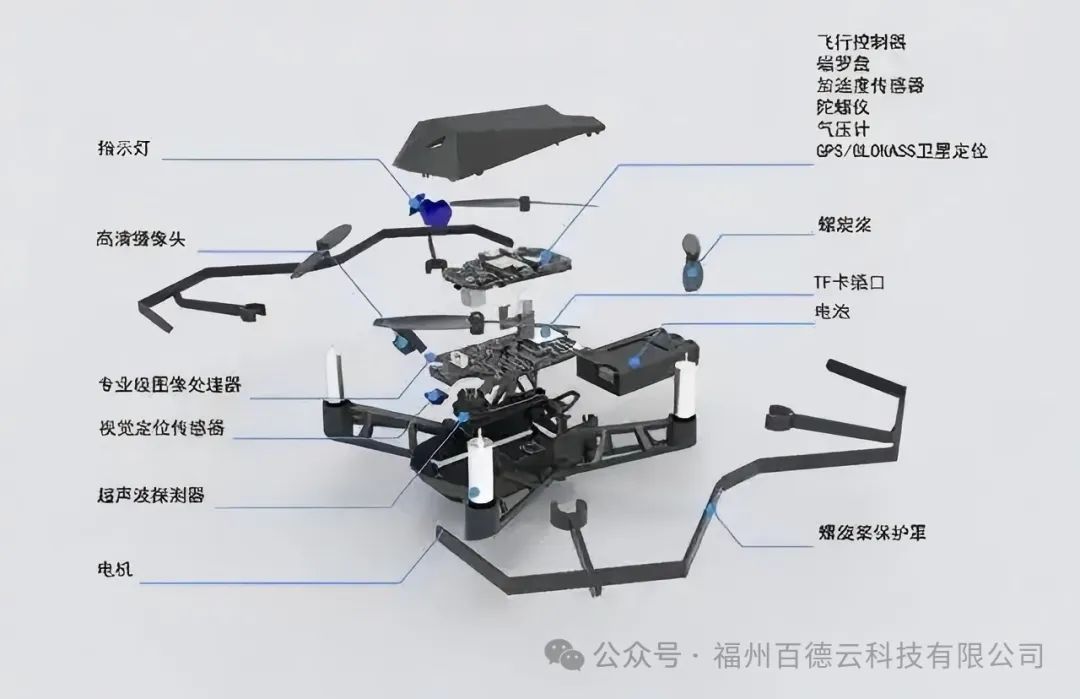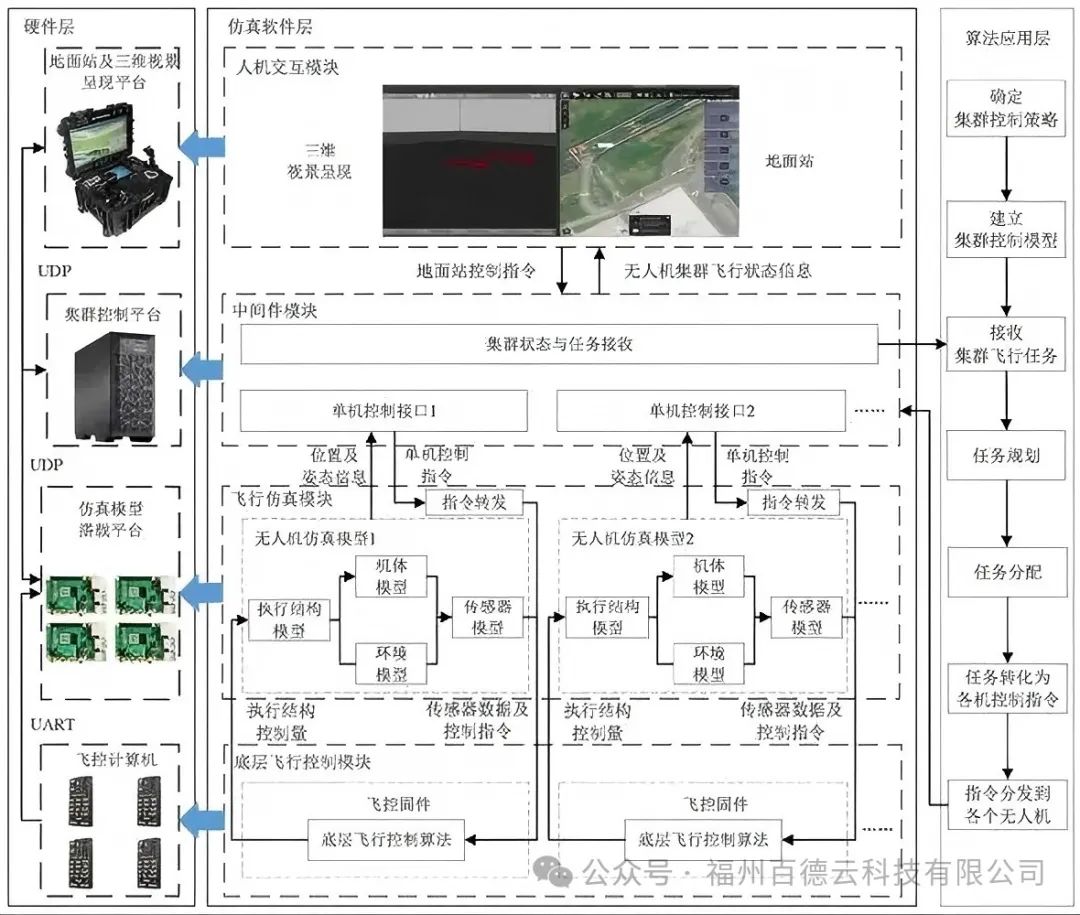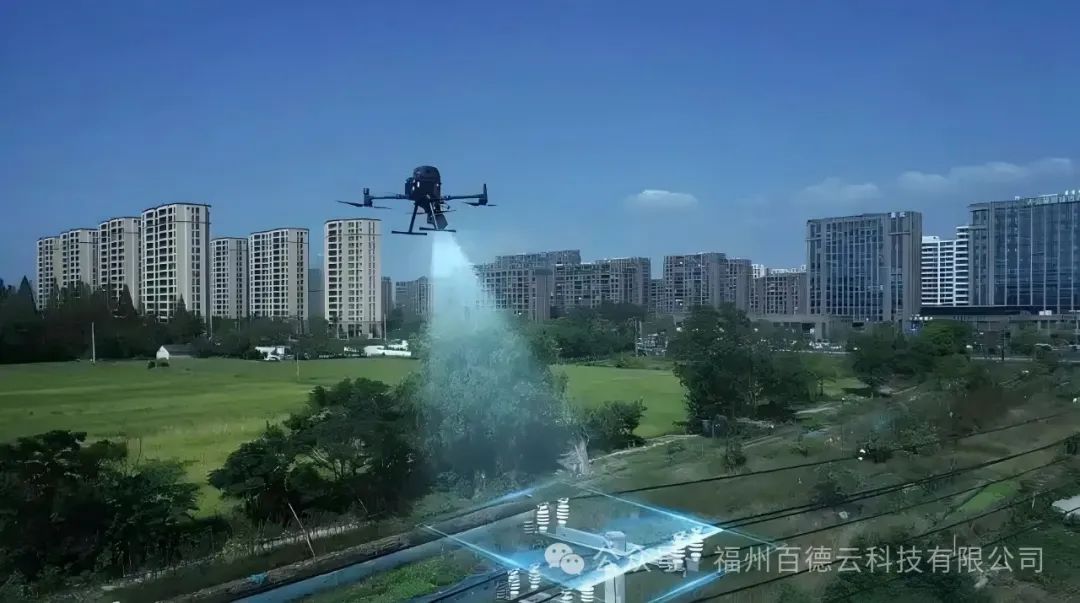The drone flight controller, also known as the flight control system or flight control board, is one of the core components of a drone. It is responsible for receiving commands from the ground station or remote controller, calculating and adjusting the drone’s attitude and position to achieve stable flight. The flight controller is essentially the ‘brain’ of the drone, and its performance directly affects the drone’s flight stability and operational safety.


The main functions of the flight controller include attitude control, navigation positioning, data transmission, fault diagnosis, and safety protection. Attitude control refers to the real-time monitoring and adjustment of the drone’s attitude through sensor data from gyroscopes, accelerometers, etc., ensuring stability during flight. Navigation positioning utilizes GPS, Beidou, and other positioning systems to provide accurate location information in real-time, allowing the drone to fly along the intended route. The data transmission function ensures timely communication between the flight controller and the ground station, enabling remote control. The fault diagnosis function can detect abnormal situations such as sensor failures and communication interruptions, taking appropriate emergency measures to enhance flight safety. Finally, the safety protection function can enable emergency landing or return in the event of irreversible faults, preventing harm to the ground. Additionally, flight controllers play a crucial role not only in consumer drones but also in high-end applications such as industrial and military drones. They provide powerful computing capabilities, allowing drones to cope with complex flight environments and task requirements, making them a key component of modern drone technology.
Technical Principles of Flight Controllers
The technical principles of flight controllers involve interdisciplinary knowledge, including sensor technology, signal processing, control theory, and artificial intelligence. Firstly, sensor technology is the foundation of the entire flight control system. Common sensors include gyroscopes, accelerometers, magnetometers, barometers, and GPS. Gyroscopes measure the drone’s attitude angular velocity, accelerometers measure linear acceleration, magnetometers detect the direction of the geomagnetic field, barometers measure altitude, and GPS provides precise location and time information. The data collected by these sensors needs to be processed in real-time and accurately so that the control system can respond quickly.

Signal processing is another critical aspect of the flight controller. The raw data collected by sensors often contains noise and interference, which need to be processed through techniques such as filters to improve data reliability and accuracy. Common filtering techniques include Kalman filtering and complementary filtering. Kalman filtering combines data from multiple sensors and provides optimal state estimation through prediction and correction steps. Complementary filtering combines data from different sensors with specific weights to achieve efficient data fusion. These signal processing techniques ensure that the flight controller can extract valid information from complex data, supporting subsequent control decisions.Control theory is key to the flight controller’s implementation of attitude control and navigation positioning. This mainly includes PID control, Model Predictive Control (MPC), and adaptive control. PID control is a classic feedback control algorithm that achieves precise control of the drone’s attitude through the adjustment of proportional, integral, and derivative parameters. Model Predictive Control is an advanced control method that optimizes control inputs by predicting the state over a future time horizon, improving the system’s response speed and stability. Adaptive control can automatically adjust control parameters when system parameters change, maintaining system performance. The application of these control theories enables the flight controller to stably control the drone’s attitude and position in various complex environments.Lastly, artificial intelligence technologies are increasingly applied in flight controllers. For instance, deep learning and reinforcement learning can be used for tasks such as path planning, obstacle avoidance, and target recognition. Deep learning improves the decision-making capability of flight controllers by learning complex nonlinear relationships from large amounts of training data. Reinforcement learning learns optimal control strategies through interaction with the environment, allowing drones to autonomously adapt to different flight tasks. The application of these technologies not only enhances the intelligence level of flight controllers but also expands the application scenarios and functionalities of drones.
Types and Composition of Flight Controllers
Flight controllers come in various types and constructions, categorized based on their performance and application scenarios. Firstly, they can be divided into consumer-grade flight controllers and professional-grade flight controllers based on the size and complexity of the aircraft. Consumer-grade flight controllers are typically used in small drones, such as aerial photography drones and toy drones. These controllers usually have a high degree of integration and relatively simple functions, but they are more affordable and suitable for general users. Common consumer-grade flight controller brands include DJI’s Naza series and WooKong-M. These controllers often use preset flight modes and parameters, allowing users to perform simple operations through a mobile app or remote control to achieve stable flight.
Professional-grade flight controllers, on the other hand, are suitable for large drones and industrial drones, such as agricultural protection drones and inspection drones. These controllers have stronger computing capabilities and more diverse functions, supporting complex flight tasks and multi-sensor data fusion. Common professional-grade flight controllers include the Pixhawk series and APM (ArduPilot Mega). Pixhawk is an open-source flight control platform that supports various types of aircraft, including fixed-wing, multi-rotor, and helicopters. It has high scalability and customizability, allowing users to add different sensors and modules based on specific needs to achieve advanced flight functions. APM is another well-known open-source flight controller that supports various flight modes and mission planning, widely used in commercial and research fields.

The construction of flight controllers typically includes both hardware and software components. On the hardware side, the flight control board is the core component, integrating the processor, sensors, and communication modules. The processor usually employs high-performance microcontrollers or embedded computers, such as STM32 and Raspberry Pi, which possess powerful computing capabilities. The sensor part includes gyroscopes, accelerometers, magnetometers, barometers, and GPS, used to collect flight data. The communication module is responsible for data transmission with the ground station or remote controller, with common communication methods including Wi-Fi, Bluetooth, 433MHz, and 900MHz. Additionally, the flight control board may also integrate battery management systems, power management, and interface expansion functions to support more peripherals and applications.On the software side, the operating system of the flight controller is typically based on real-time operating systems (RTOS) such as FreeRTOS and ChibiOS. Real-time operating systems ensure timely response and processing of tasks, suitable for high real-time requirements of flight control. The control algorithms are the core software components of the flight controller, including attitude control, navigation positioning, data transmission, and fault diagnosis. Common control algorithms include PID control, Model Predictive Control (MPC), and adaptive control. Furthermore, the flight controller needs to implement data fusion algorithms to integrate data from multiple sensors, improving data accuracy and reliability. Finally, the user interface and ground station software are also important components of the flight controller, allowing users to monitor the drone’s status in real-time, switch flight modes, and plan missions through a graphical interface.
Application Scenarios of Flight Controllers
Flight controllers play an important role in various drone application scenarios, ranging from aerial photography to agricultural protection, industrial inspection, and military reconnaissance, showcasing a wide range of applications and significant technological advantages. Firstly, aerial photography drones are one of the most common applications among consumer-grade drones. For example, DJI’s Mavic series, equipped with the Naza flight controller, not only achieves precise flight attitude control but also supports various intelligent shooting modes such as tracking shots, waypoint flying, and orbit shooting. These features enable aerial photography drones to fly stably in complex environments and capture high-quality images. The high performance and stability of flight controllers ensure that users can operate easily and capture beautiful scenes effortlessly.Military reconnaissance is another important application scenario for flight controllers. For instance, Israel’s Heron unmanned reconnaissance aircraft is equipped with advanced flight controllers. This controller supports various sensors, including infrared cameras, radars, and communication devices, enabling remote reconnaissance and data transmission in complex environments. The flight controller also possesses strong autonomous flight capabilities, allowing it to complete long-duration patrol and reconnaissance missions without human operation. These functions enable unmanned reconnaissance aircraft to play a significant role in military operations, providing timely intelligence support and enhancing battlefield situational awareness.

Looking ahead, drone flight controllers will develop towards greater integration, intelligence, and efficiency. With continuous advancements in sensor technology, optimization and innovation of control algorithms, and in-depth applications of artificial intelligence technologies, flight controllers will possess stronger autonomous decision-making capabilities and higher real-time response speeds. Moreover, the development of the Internet of Things (IoT) and 5G communication technologies will further enhance the remote data transmission and real-time monitoring capabilities of drones, achieving efficient drone formation flying and multi-drone collaboration.